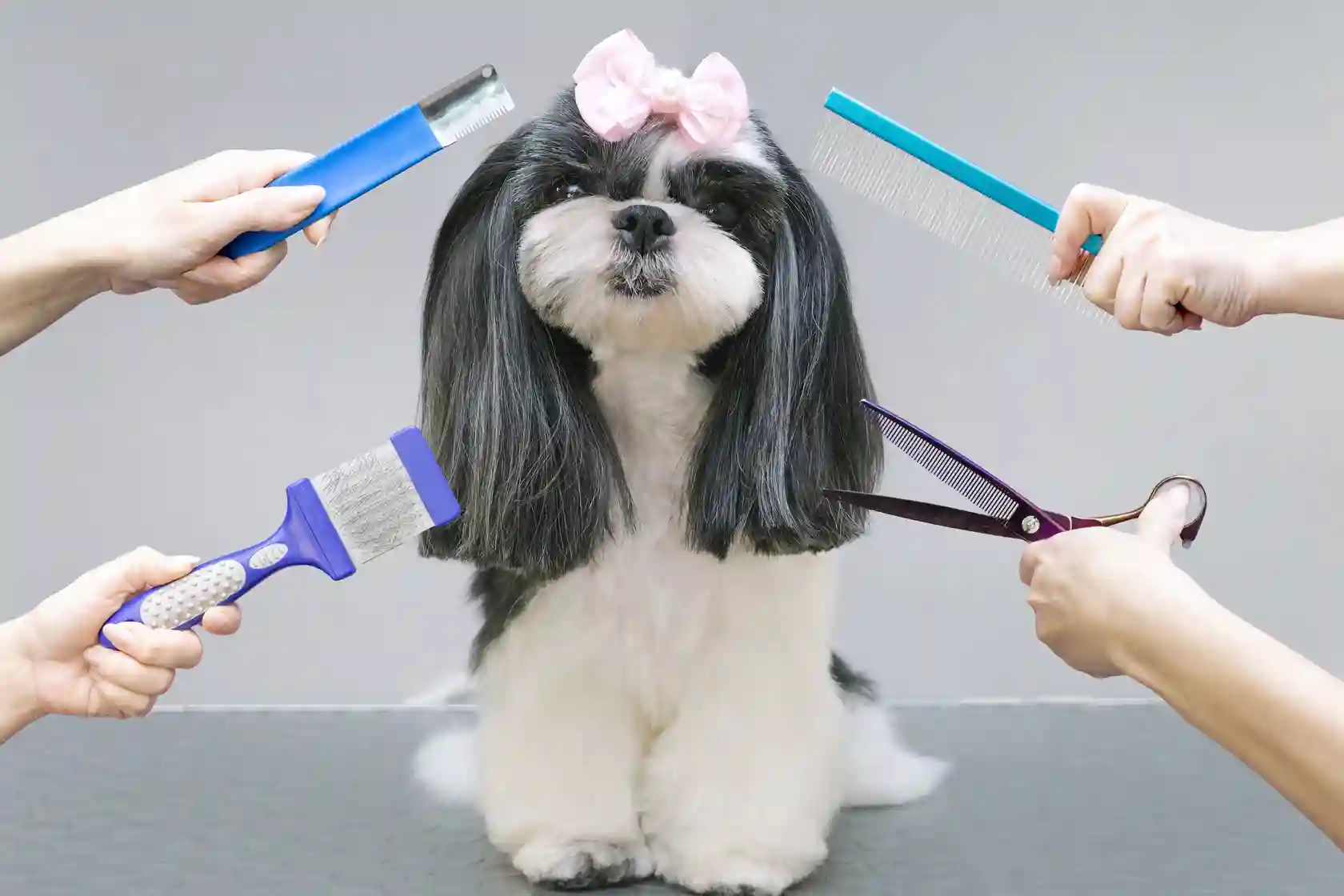The Complete Dog Grooming Styles Guide for 2025
Fancy yourself a dog-lover? Here’s your complete dog grooming styles guide to getting your pup looking pro! Find out the various styling options and pick what suits your pooch best. No fuss or stress, just easy tips to get them ready for the show!
Grooming is essential for the health and well-being of your furry friend. In this guide, we’ll cover everything you need to know about dog grooming styles. From shedding to mats and tangles, understanding your dog’s coat is crucial. We’ll also share tips for nail trimming, brushing, and dealing with grooming anxiety. With patience and practice, you can achieve professional-quality results at home.
When it comes to brushing, different brush types are suitable for different dogs. Golden Retrievers, Goldendoodles, and Labradoodles typically have thick, wavy coats that require regular brushing to avoid matting. Huskies shed heavily, and an undercoat rake can help remove loose fur. Wire-haired Dachshunds need a stripping tool to remove dead hair from their outer coats. Bristle brushes, slicker brushes, and steel combs are also great options for various coat types.
For nail trimming, it’s essential to use the right tools and techniques to avoid injury. Guillotine clippers and scissor clippers are popular options. A dremel tool can also be used to file down nails. If you’re not comfortable trimming your dog’s nails, professional groomers can help.
When it comes to grooming cuts, there are multiple styles to choose from. Symmetrical cuts like the “teddy bear cut” are popular for breeds like the Poodle and Bichon Frise. For German Shepherds, a “lion cut” can help with shedding. Thinning shears can help create a natural-looking trim.
Pro Tip: Brushing your dog regularly can help prevent skin infections and keep their coat healthy and shiny. Use a deshedding comb to remove loose fur, and be gentle around sensitive areas like the face and ears.
By following this guide, you’ll be well-equipped to take care of your pup’s grooming needs.
Remember to prioritize patience and positive reinforcement to make the process as stress-free as possible. With the right techniques and tools, you can keep your dog’s coat looking sharp and their nails trimmed safely.
Key Takeaways
The Importance of Regular Grooming for Dogs
Regular grooming for dogs: Why it’s crucial for their health and well-being
Grooming is an essential aspect of caring for our furry friends. Regular grooming sessions not only keep their coat shiny and clean but also help prevent health issues such as matting, infections, and parasites. Neglecting proper grooming can lead to painful skin conditions and discomfort for dogs.
Regular grooming sessions can also provide an opportunity for pet parents to detect any abnormalities or lumps on their dog’s skin. Moreover, grooming helps create a bond between dogs and their owners, which can lead to stress reduction and a happier dog.
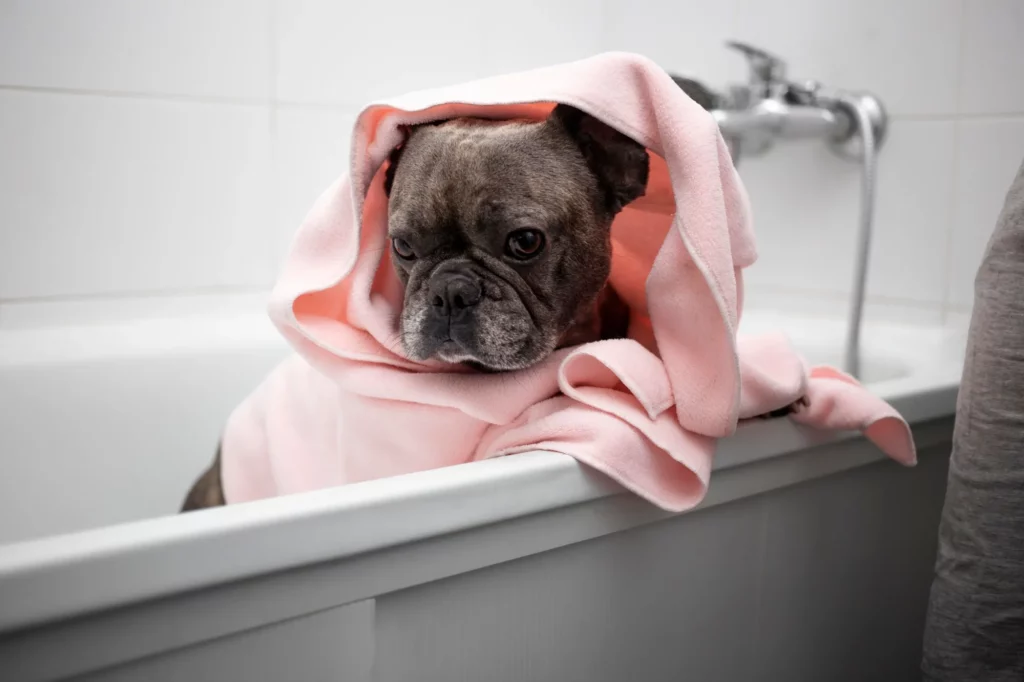
It’s important to note that dogs have unique grooming needs that require specific tools and techniques depending on their breed, size, and coat type. Investing in the right grooming tools such as rakes, clippers, and brushes can make all the difference in achieving the desired results.
According to the style guide by Hounds Lounge Pet Resort and Spa, there are several grooming styles that pet parents can consider based on their dog’s coat type and lifestyle needs. Some popular grooming styles include shaving, mani-pedis, and trimming. Understanding the dog grooming styles chart and dog grooming cuts can help pet parents choose a style that best suits their dog’s specific needs.
In summary, regular grooming is essential for maintaining a dog’s hygiene, health, and well-being. By providing proper grooming sessions and understanding the unique needs of our furry friends, we can ensure that they remain happy and healthy. As per All About the Dog Grooming, pet grooming information can be found in various resources, websites, and pet stores.
Brush and Comb Types for Different Breeds
The Importance of Proper Brushing and Combing for Different Dog Breeds
Different dog breeds have different hair types, and as such, require different grooming styles. Proper brushing and combing is crucial for maintaining the health and beauty of your furry friend’s coat.
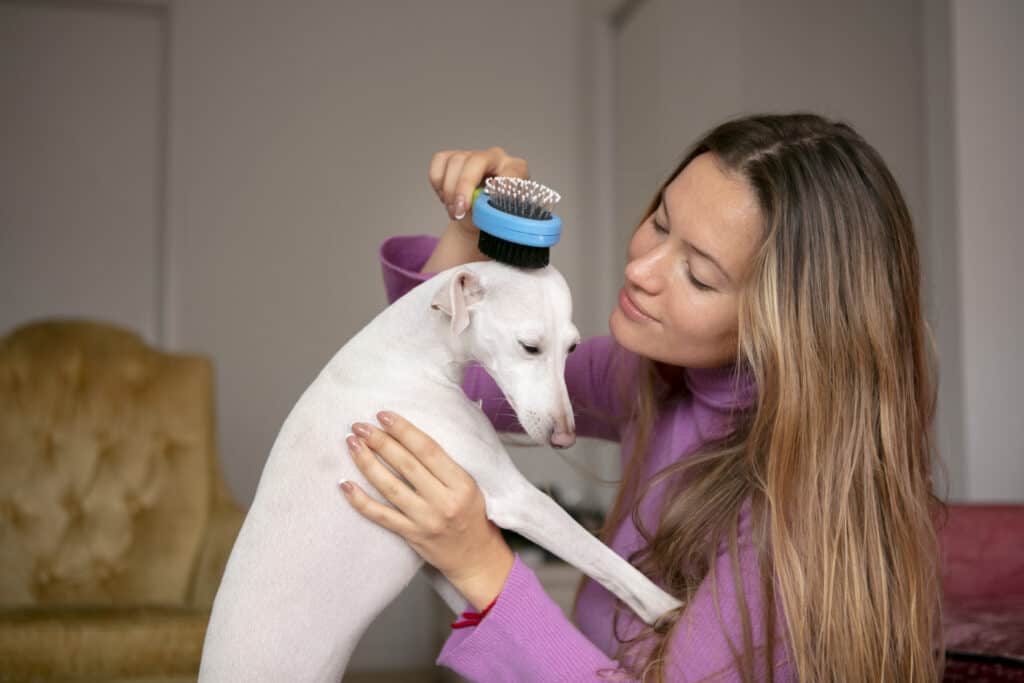
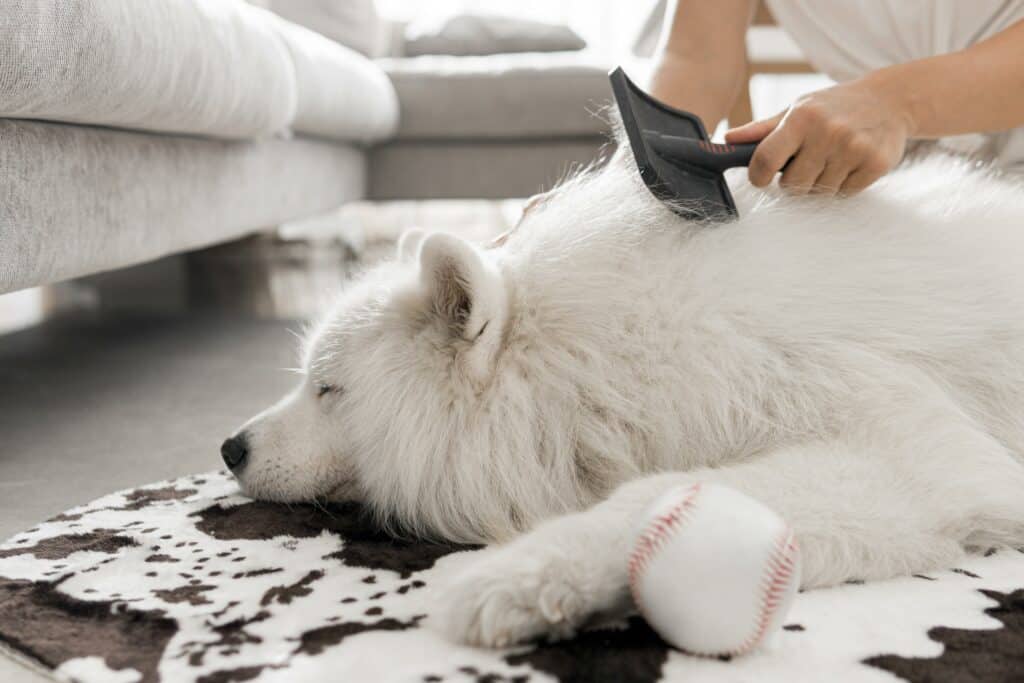
A Table Showing Brush and Comb Types for Different Dog Breeds
For your convenience, we have created a chart below that shows the appropriate brush and comb types for different dog breeds. This chart can help you choose the right tools for your dog’s specific coat type and length.
| Dog Breed | Coat Type | Recommended Brush and Comb Types |
|---|---|---|
| Labrador Retriever | Short, Coarse | Bristle Brush |
| Poodle | Curly, Dense | Slicker Brush, Steel Comb |
| Golden Retriever | Long, Dense | Pin Brush, Undercoat Rake |
| Shih Tzu | Silky, Fine | Bristle Brush, Steel Comb |
Don’t Forget to Pay Attention to Unique Details
In addition to the chart, it’s important to note that some breeds have unique grooming needs. For example, breeds with soft undercoats may require more frequent brushing to prevent matting.
A True Fact About Dog Grooming
According to the American Kennel Club, regular grooming not only improves a dog’s appearance, but also has health benefits such as preventing skin conditions and promoting healthy circulation.
Slicker Grooming Brushes
Slicker brushes – Slicker brushes are dog grooming brushes that have fine, tightly packed wire bristles. They are useful for removing loose hair and mats in breeds with long, curly, or wiry coats.
For dog owners who adore their furry friends, taking care of them is paramount. In any case, assessing which type of combing brush is ideal for each breed needs careful consideration. It is always important to do research before choosing a brush for grooming your furry friend.
A true fact: A study by the American Veterinary Medical Association (AVMA) found that regularly brushing dogs can lead to healthier skin and coat while promoting better blood circulation and improving its overall well-being.
Rakes
Raking is an essential tool in a dog grooming chart. It is a type of comb with long, widely spaced teeth that help loosen and remove deep-rooted mats and tangles in your dog’s coat. Rakes are ideal for use on breeds with double coats or thick fur that tend to shed heavily during certain seasons.
Rakes
| Type | Description | Ideal Breeds |
|---|---|---|
| Double Row | Two rows of teeth that trap shedding fur | German Shepherds, Golden Retrievers, Siberian Huskies |
| Single Row | One row of tightly spaced teeth for dematting | Poodles, Bichon Frises, Yorkshire Terriers |
| Undercoat Rake | Removes dead undercoat without cutting the topcoat | Australian Shepherds, Border Collies, Chow Chows |
It is important to note that raking should be done gently as it may cause discomfort or pain if done too harshly. Always rake carefully towards the direction of hair growth and never tug or pull at matted areas.
When using a rake, use an all-natural detangler spray beforehand to aid in the removal of mats and tangles. Keep your strokes slow and steady and give your pup lots of positive reinforcement to make the experience enjoyable.
To conclude, rakes are an important tool in any dog grooming styles chart. Use them carefully to keep your pup looking their best!
Bristle Brushes
Smooth Coat Brushes
Smooth coat brushes are excellent grooming tools for dogs with short and smooth fur. These brushes consist of soft bristles that help distribute the natural oils in a dog’s skin, resulting in a shiny and healthy-looking coat. Additionally, these brushes prevent shedding by removing loose hair and dirt from the dog’s coat.
For best results, use smooth coat brushes in combination with other grooming tools like flea combs and de-shedding tools. Using these tools together can effectively remove all tangles, mats, and debris from your pet’s coat.
One critical point to keep in mind is to choose the right brush based on your pet’s needs. Some dogs may have dry skin prone to irritation while others may produce a lot of oil requiring more frequent brushing. Always read the labels carefully before buying any grooming tool.
Did you know that using too harsh brush bristles can cause cuts or rashes on your furry friend’s skin? According to the American Kennel Club (AKC), it is essential to choose the correct size and type of brush based on your dog breed and coat texture to avoid any discomfort or injury.
Steel Combs
Steel combs, a necessary grooming tool, are widely used to remove tangles and mats from the dog’s coat. Here’s what you need to know about steel combs for effective dog grooming.
In addition to their versatility, durability, and precision during dog grooming styles, steel combs are also gentle on your dog’s skin.
Don’t miss out on using this essential tool that will enable you to maintain perfect pet hygiene and enhance their beauty.
Invest in a good quality steel comb today and enjoy the benefits of effective dog grooming techniques without compromising your furry friend’s comfort.
Nail Trimming Tools by Breed Size
When it comes to keeping your furry friend looking and feeling their best, nail care is an essential part. However, the tools that you need for effectively trimming the nails vary depending on the size of the dog. Here’s a look at the Nail Trimming Tools for Different Breed Sizes:
Moreover, if you are not sure what size clipper is right for your pet, consult with a professional groomer.
To avoid causing any discomfort or pain to your furry friend, remember to take things slowly, be careful, and use some of the helpful trimmers, and you will have your dog’s nails looking great in no time.
Scissor Clippers
Scissor clippers are an essential dog grooming tool designed to operate like scissors, delivering exceptional cutting precision. This tool is commonly used on dogs with softer coats and small breeds.
This breed makes it easy for professional dog groomers who know better about whether Clipping their fur using Scissor Clippers would be effective.
For more helpful tips and tricks about all for the dogs grooming visit our website now!
Guillotine Clippers
Guillotine-style clippers operate similarly to a guillotine, with a small hole in the clipper where you insert your dog’s nail. As you squeeze the handle, a small blade slides across and severs the nail at the specified length.
Dremel
Using a rotary tool to grind down a dog’s nails is commonly known as ‘Rotary Dog Nail Filing‘ or commonly referred to as Dremel.
- Choose the right attachment: Choose the Dremel attachment that works best for your dog’s nail size and texture.
- Introduce your dog: Introduce the sound and feel of the Dremel slowly so that your pup feels comfortable when you use it on his or her nails.
- Grinding technique: Gently rotate the Dremel in a grinding motion while periodically checking for heat build-up or sensitivity from your pet.
When using a Dremel attachment, it is essential to regularly check if there are any nicks developing on your pup’s nail. It would be best if you used the tool cautiously and avoid over-grinding their nails.
It is better to start filing early when it comes to dogs’ nails as letting them grow excessively can lead to numerous health issues.
Complete Grooming and Style Guide for Golden Retrievers
As a pet owner, it is important to know how to groom your Golden Retriever. This guide covers everything you need to know about doggie grooming styles and techniques for Golden Retrievers.
Additionally, it is important to remember that each dog is unique and may require specific grooming treatments based on their age, health, and individual coat type.
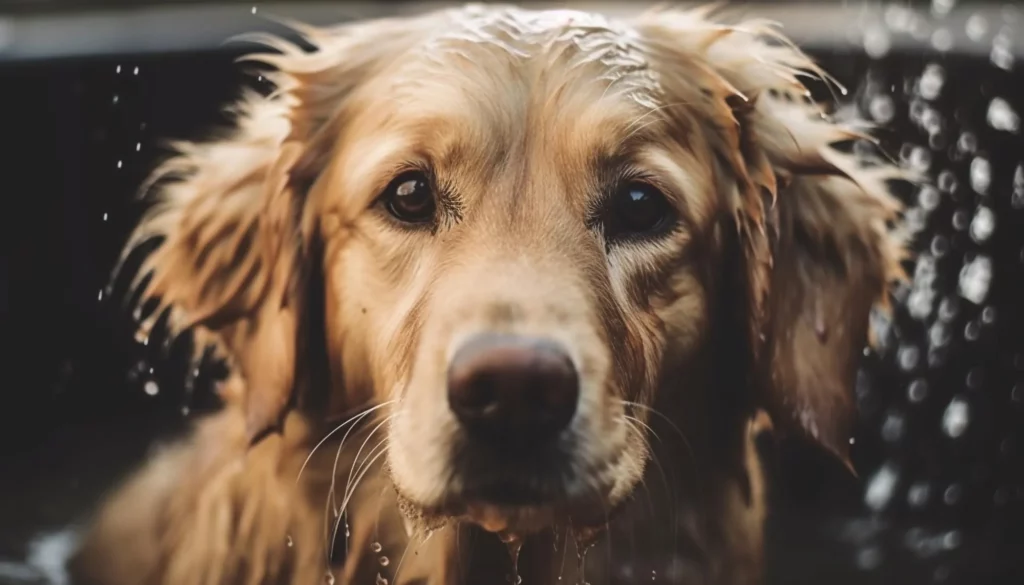
As a testament to the importance of proper grooming, a friend once neglected to groom their Golden Retriever for months and ended up spending a significant amount of money at the vet to treat a severe case of matting and skin irritation. Don’t let this happen to your furry friend – follow this complete guide to ensure your Golden Retriever stays happy and healthy through proper grooming techniques.
Best Brushes to Use for Golden Retrievers
When it comes to grooming your furry friend, selecting the ideal brush is imperative. In this section, we will delve into the recommended brushes to use for Golden Retrievers:
- The slicker brush: This type of brush is ideal for dogs with long hair, including Golden Retrievers. With long bristles that reach deep into the coat, you can easily remove tangles and mats.
- The pin brush: A hybrid between a slicker and a bristle brush, this is suitable for an all-around coat combing. It has flexible pins that provide a gentle massage while preventing matting.
- The undercoat rake: Necessary for removing shed pet hair from beneath the topcoat. It minimizes shedding by preserving loose fur at bay. Mostly recommended using in conjunction with other brushes.
- The rubber curry brush: Cleans dead skin cells and dirt away from the dog’s coat using soft rubber nubs. Perfect for keeping your dog’s coat shiny and healthy!
It’s best to purchase high-quality brushes that are available in different size options to cater to your dog’s body size and hair length needs.
Lastly, know the purpose of each type of brush before settling on which one works well for you and your golden retriever.
Pro Tip: Always ensure that your brushes are regularly cleaned to keep them free of debris and maximize their longevity.
Bathing Your Golden Boy or Gal
Maintaining Your Furry Friend’s Cleanliness – Tips for Bathing Your Canine Companion
Giving your furry friend a bath is an essential part of their grooming routine. Keeping your dog clean not only makes them smell better but also helps prevent skin and coat problems. Follow these 6 steps to ensure a safe and comfortable bathing experience for both you and your dog.
- Choose a suitable location – A bathtub or shower works best for larger dogs, whereas smaller breeds can be bathed in a sink.
- Brush before bathing – Pre-bathe brushing helps remove loose fur and mats, making it easier to lather and rinse the shampoo.
- Adjust water temperature – Make sure the water is lukewarm, as hot water can burn your dog’s skin and cold water may cause discomfort.
- Use dog-specific shampoo – Human shampoo is not good for their coats as they have different pH levels. Use gentle dog-specific shampoos instead.
- Use appropriate equipment – Consider using non-slip mats, washcloths, towels, and ear plugs to make the process easy on your canine companion.
- Thoroughly rinse and dry – Rinse all soap out of your dog’s coat thoroughly, and ensure they are fully towel dried to prevent colds or hypothermia.
These tips will go a long way in removing dirt, debris, fleas, or ticks from your Golden Boy or Gal while keeping them looking glossy and clean.
Remember always to use positive reinforcement during the bathing process to create a fun experience for both of you!
Styling for Your Golden Retriever
Maintaining Your Golden Retriever’s Appearance:
Grooming and upkeep for your beloved Golden Retriever can help improve their hygiene and appearance.
Additionally, Golden Retrievers have sensitive areas that may require special attention during grooming, such as the tail base area where mats tend to form or between their toes where debris can gather.
To ensure that your furry friend is always looking its best, it is important to keep up with regular grooming practices. Don’t forget that regular visits to a professional groomer are an excellent way to keep your pet in tip-top shape. Take care of all about the dog grooming if you don’t want them missing out on social interaction because of a lack of good hygiene practices!
Dog Grooming and Styling for Goldendoodles & Labradoodles
Dog grooming and styling are essential tasks for maintaining the appearance, hygiene, and health of Goldendoodles and Labradoodles. As these breeds have thick, curly or wavy coats, proper grooming promotes healthy skin and reduces the risk of matting and tangling. This guide covers all aspects of dog grooming and styling for Goldendoodles and Labradoodles.
Goldendoodles and Labradoodles require regular grooming and attention, and an informed breed-specific approach can enhance their overall well-being. Keep in mind that each dog may have unique needs, and regular grooming sessions can be an excellent bonding opportunity between you and your pet.
Pro Tip: Use positive reinforcement and reward-based methods to train your dog to enjoy the grooming sessions. This approach will make the process fun and reduce stress for both you and your furry friend.
Best Brushes to Use on Your Goldendoodle or Labradoodle
When it comes to maintaining the coat of Goldendoodles and Labradoodles, choosing the right brushes is key. The grooming process can be a daunting task, but with the right tools, it can become much easier.
If you’re looking for an efficient way to manage your Goldendoodle or Labradoodle’s coat, invest in high-quality brushes that cater to their unique needs. Using these recommended brushes on a regular basis will help keep their coat healthy and shiny.
To further ensure that your pet looks its best, try to find brushes that are gentle and won’t pull on their skin. For dogs with sensitive skin types, consider using softer brushes made with flexible materials. All in all, with proper grooming tools and techniques adapted for each dog’s unique traits makes it possible to turn even less desirable coats into head-turners.
Bathing Your Doodle
Maintaining Your Doodle’s Hygiene: Everything You Need to Know
Taking care of your furry friend’s hygiene is vital for their overall health. In this section, we will enlighten you on how to keep your Doodle clean and healthy.
A 5-Step Guide to Bathing Your Dog
Here is a step-by-step guide to bathing your Doodle:
- Brush out any excess hair from their coat with a slicker brush.
- Wet the dog thoroughly from the neck down with warm water.
- Apply dog shampoo on the coat and lather it up well, avoiding eyes, ears, and nose.
- Rinse thoroughly with lukewarm water, ensuring all shampoo is washed out properly.
- Dry them carefully with a towel or blow dryer on low heat. Brush their furs after they’re dried.
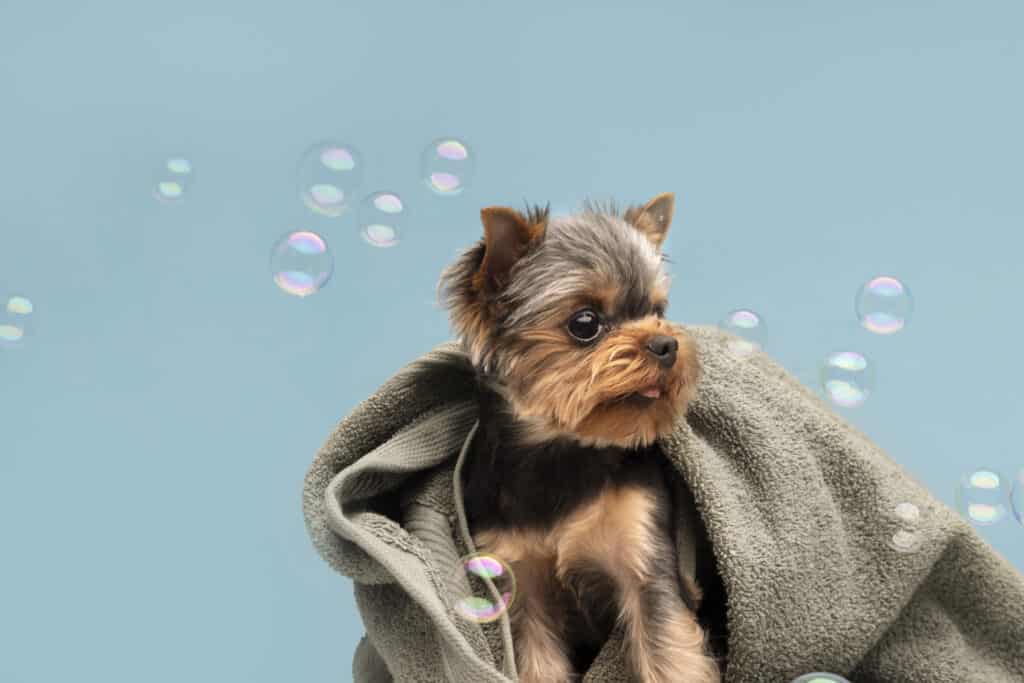
Additional Details regarding Dog Grooming
To avoid drying out their skin when shampooing, use specially formulated shampoos intended for dogs only. Some dog breeds have specific grooming requirements that differ based on coat type. Hence it is important to note the grooming specifications for specific breeds.
A True History about Dogs’ Grooming
Even though dogs regularly groom themselves, proper grooming procedure is essential for maintaining your pets’ hygiene. It has been documented that Greeks had special treatments for pets as early as 550BC which include pet grooming practices.
Grooming and Style Guide for Your Doodles
For those seeking a complete guide regarding dog grooming and styling, this article offers an all-encompassing resource. Uniquely tailored for Doodles, it provides valuable insights into the necessary steps to ensure proper grooming and styling techniques.
- Start with Brushing: Begin by brushing your Doodle’s hair out properly before commencing any grooming activity.
- Bathing: Once you have thoroughly brushed your Doodle’s fur, move on to bathing. To avoid discomfort or injury, be extra cautious with their eyes and ears.
- Nails & Paws: After you have finished washing off the shampoo and conditioner, pay attention to their nails and paws, which require special attention due to their active lifestyle.
- Ears & Eyes: Next up are the ears and eyes; carefully dry them off while inspecting for any signs of wax buildup or infection.
- Haircut & Styling: As a final step, pick a hairstyle that is comfortable for your furry pal while ensuring they look good too! Use specialized tools or seek professional help if required.
Additionally, always remember to take your time while grooming. Be aware of your Doodle’s responses/reactions at all times to avoid any mishaps.Pro Tip- Make sure you utilize treats as a bribe and choose an appropriate time for grooming as both can make the process much easier.
How to Groom Your Husky
Grooming Your Husky – A Step-by-Step Guide
Keeping your husky’s coat and skin healthy is important for their overall well-being. Here is a guide to grooming your husky that will help you maintain their beautiful coat effortlessly.
- Brushing
Use a slicker brush to remove loose hair and tangles. Gently start from the head and work your way down to the tail. Brushing your husky’s coat regularly will keep their coat shiny and healthy. - Bathing
Bathing your husky once every three months is essential for their hygiene. Use a dog shampoo and conditioner while washing them to ensure that their coat stays healthy. Dry them thoroughly after the bath. - Nail Trimming
Regular nail maintenance is essential for your husky’s health. Trim the nails using a clipper or grinder, being careful not to cut the quick. If you are unsure, seek the help of a professional. - Dental Care
Maintaining your husky’s dental health is crucial. Brush their teeth regularly using a soft toothbrush and toothpaste made specifically for dogs.
Remember to reward your husky with treats after each grooming session to make the experience enjoyable.

Don’t forget to clean their ears with cotton pads soaked in ear cleaner. This helps remove any accumulated wax and debris.
Fun Fact: Huskies’ double coats protect them from both the cold and the heat. They shed their coats twice a year, making grooming even more important. (Source: PetMD)
Best Brushes to Use on Your Husky Baby
Brushing your Husky is an essential part of maintaining their coat’s health and appearance. As a responsible pet parent, you might be wondering what are the best brushes to use on your furry friend.
When selecting a suitable brush type, it needs to be adapted to cater to dogs’ grooming needs. Therefore investing in a quality set of brushes suited for your husky’s fur type will help achieve optimal results and make grooming all about dogs dog grooming a fun experience.
It is worthy mentioning that despite coming in different designs, shapes & sizes comb with wide-spaced teeth should secure a spot among the arsenal. This effective combs provide smooth traction through stubborn tangles & mats thus save time/energy.
A true-life story throws light on how ignoring aspects like brushing can have harmful effects on these furry babies as shedding frequency worsens, leaving unwanted fur trails in homes unsettling members allergic resulting in major distress amongst persons involved! Regularly brushing with specialized tools now makes all about dog grooming easy and fun while sustaining pleasant relationships with our huskies.
Bathing Your Husky
When it comes to keeping your furry friend clean and shiny, there are certain techniques that work better for different breeds. For Huskies specifically, we have curated a professional guide on the optimal ways to cleanse them.
Follow these 6 simple steps to keep your Husky looking and smelling fresh:
- Prep your dog by brushing any excess fur and dirt off
- Wet their coat with lukewarm water
- Apply a shampoo that is safe for dogs according to their skin type
- Gently massage the shampoo into their coat, avoiding sensitive areas such as the eyes and ears
- Rinse thoroughly with warm water until no more suds remain
- Dry with towels or a blow dryer set on low heat
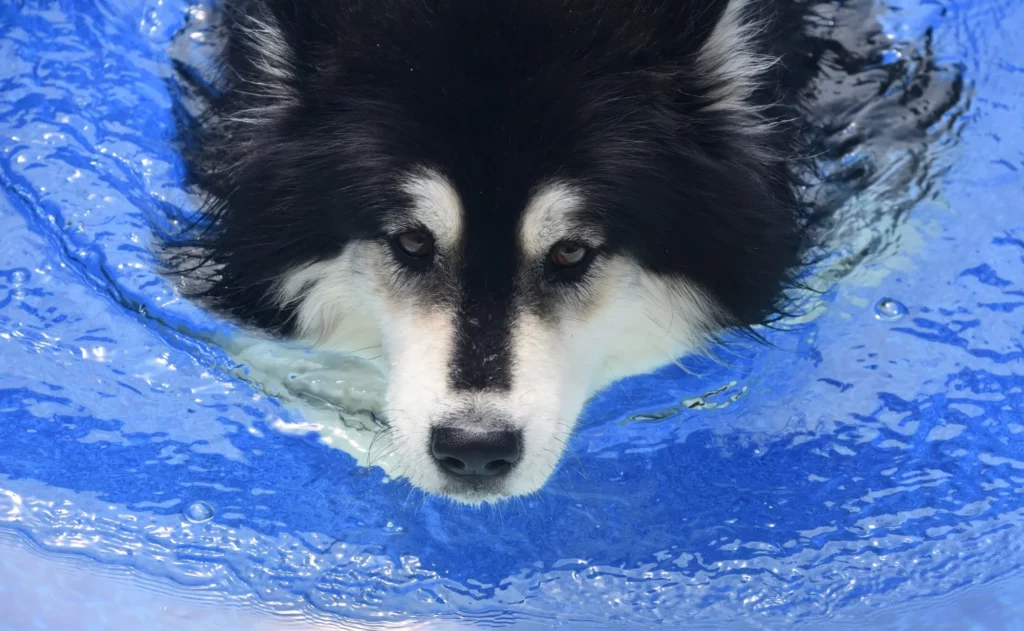
For best results, schedule baths once every three months as washing them too frequently can strip their natural oils, leading to skin problems. Be sure to use high-quality dog shampoos containing all-natural ingredients that will not irritate your pup’s delicate skin.
Lastly, it is important to be cautious about where you bathe them. The ideal location would be outside in the garden using a hose, but if indoors ensure an easy-to-clean space is chosen. With these simple steps mastered, you can keep your Husky squeaky clean ‘all about the dogs grooming’!
Everything to Know About Grooming Your Dachshunds
Grooming your Dachshund is vital to their health and happiness. Understanding the appropriate grooming techniques and tools is essential to keep your furry friend looking their best.
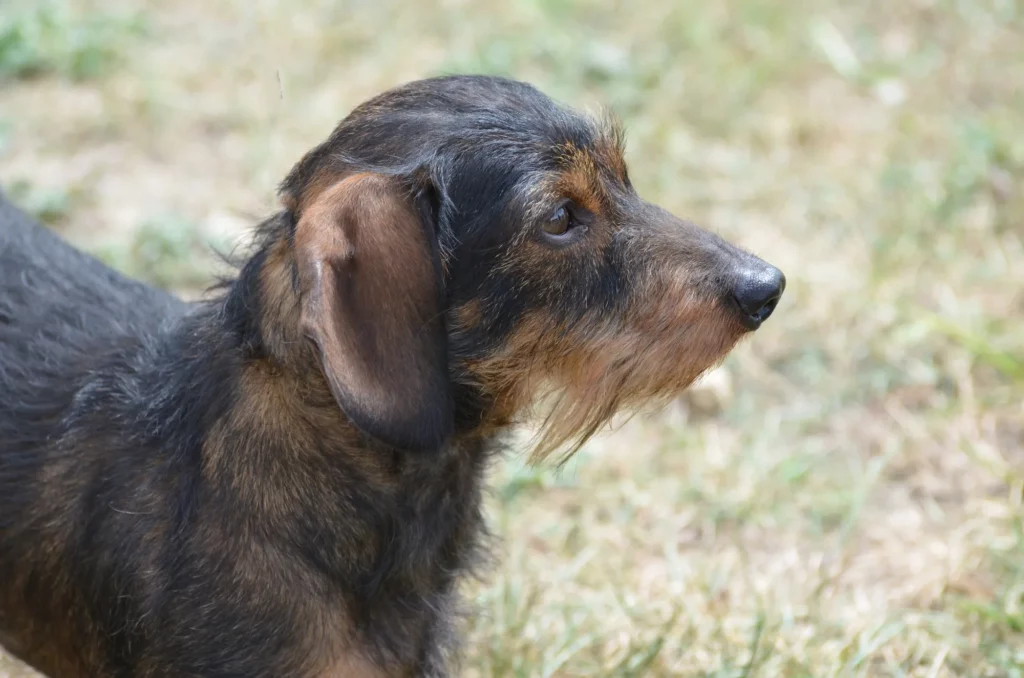
Here’s a comprehensive guide on Dachshund grooming, covering everything you need to know.
- Step 1: Brush Your Dachshund’s Coat – Brushing your Dachshund’s coat daily helps remove any tangles or mats. Use a slicker brush for dogs with longer hair and a bristle brush for a smooth coat. Brushing also removes loose fur and prevents shedding.
- Step 2: Bathe and Dry Your Dachshund – Bathe your Dachshund every three months and dry them thoroughly to prevent skin infections. Use a dog shampoo that’s free from harsh chemicals to avoid skin irritation.
- Step 3: Trim the Nails – Trimming your Dachshund’s nails reduces the risk of them getting injured. You can use guillotine clippers or scissor-like clippers to cut the nails.
- Step 4: Clean Your Dachshund’s Ears – Clean your Dachshund’s ears to prevent ear infections. Use a cotton ball or a gentle cloth with an ear cleaning solution to clean the ears.
Use dog-specific products and seek professional grooming help if you’re unsure.
Dental hygiene is a crucial grooming aspect that cannot be ignored. Maintaining your Dachshund’s dental hygiene prevents dental diseases such as plaque and tooth decay.
While the origin of Dachshunds remains contested, they date back to the 16th century and originated in Germany. They were bred to hunt badgers and have been popular pets for years.
Bathing Your Dachshund (All Hair Types)
Grooming Your Dachshund includes bathing them regularly to maintain their hygiene and cleanliness. Here’s how to do it for all hair types.
- Prepare the area: Use a non-slip rubber mat at the bottom of the tub or sink. Check the water temperature, as it should be lukewarm, around 100-102°F.
- Brush your dog: Gently brush your Dachshund’s fur before getting into the water.
- Wet and lather them up: Wet your dog’s coat with warm water and use a gentle shampoo formulated specifically for dogs. Lather their coat gently and avoid getting any soap or water in their eyes or ears.
- Rinse thoroughly: Rinse your Dachshund thoroughly with warm water, ensuring there is no soap left on their skin since leftover formula can cause irritation or itching later on.
- Dry your dog: You can use a towel to dry off most of their hair or a blow dryer set to low heat, but ensure you keep the distance between the dryer and your dog’s coat since these dogs are photo-sensitive.
- Final touchup: Brushing after they are dried ensures that there are no mats anywhere on their coat.
It is essential to dry off every part of their body as dampness increases unpleasant odours from your furry companions. While drying their ear canal, be careful not to apply pressure or damage the natural flow.
Pro Tip – To determine if it’s time for another bath, give your pup a sniff-test by moving close and smelling around his fur.
Best Brushes for Long-Haired Dachshunds
Dachshunds with long hair require specific brush types to maintain their coat. Here’s all about grooming your furry friends’ coats with Best Brushes for Long-Haired or Shaggy-Coated Daschunds.
It’s important to note that not every Dachshund will react well to every type of brush, so it may take some trial-and-error to find which one works best. Ultimately, it’s important to have regular grooming sessions with your canine companion to ensure a healthy coat.
Interestingly, the origins of the Dachshund breed come from Germany in the 15th century when they were bred specifically for hunting badgers. Their long bodies allowed them to dig into burrows and chase down small prey – hence their name “Dachs” meaning badger, and “hund” meaning dog.
Au-Natural Styling for your Long-Haired Dachshund
Maintaining the natural look of your Long-Haired Dachshund is achievable with proper grooming techniques. A combination of brushing, shampooing, and trimming allows your dog to exhibit its beautiful and healthy coat texture. Here’s how to get it done.
- Start by brushing the coat thoroughly using a slicker brush from head to tail.
- Use dog-safe shampoo to clean your pet, then rinse it off.
- Towel dry your pet gently before air drying or using a blow dryer on low heat.
- Use thinning scissors or clippers to trim hairs around the ears, underbelly, and paw pads.
- Add some finishing touches by brushing the hair backwards along the tail while using a metal comb.
Also, remember that Long-Haired Dachshunds may need regular trimming every six months. Avoid over-shampooing as it may strip its natural oils resulting in fur damage instead of improving its condition.
Don’t miss out on giving your furry friend a professional grooming experience. Schedule an expert dog groomer appointment for all about the dogs grooming needs today!
Brushing Tips for Wire-Haired Dachshunds
Wire-haired Dachshunds require proper grooming and brushing for their coats. Here are some tips to help you maintain your pet’s hair:
- Use a slicker brush to remove any tangles or mats.
- Bathe them with dog-specific shampoo to avoid drying out their coat.
- Brush in the direction of hair growth to not hurt their skin.
- Use thinning shears on thick areas such as behind the ears or armpits.
- Clipper cut longer fur on pads, tail, and underside.
- Check for ticks and fleas while brushing.
It’s important to take care of your Wire-Haired Dachshund’s grooming needs properly, ensuring they stay healthy and happy.
Did you know that wire-haired Dachshunds were originally bred in Germany for hunting badgers?
Clipping for Your Wire-Haired Doggo
For your wire-haired doggo, grooming is a crucial part of their overall care. Clipping, in particular, is essential to keep their coat clean and healthy. Here’s a guide to help you with the process.
- Gather necessary tools – To start clipping for your wire-haired doggo, you’ll need high-quality clippers, scissors, brushes and combs.
- Prepare your dog – Before starting the actual clipping process, make sure your dog is properly bathed and dried, and their coat is free of tangles and mats.
- Clip in sections – Use the clippers on one section at a time, starting from the neck down towards the tail.
- Finish with scissors – After using clippers on all sections, use scissors to neaten up any longer hairs or uneven areas around legs.
It’s worth mentioning that wire-haired dogs require careful handling while being clipped as their skin closest to coat can be sensitive. Proceed with caution and take frequent breaks if necessary.
Pro Tip: Always avoid using human hair clippers when it comes to grooming your pet-razor burn is au contraire not an ideal look for our furry friends!
Brushing Tips for Short-Haired Dachshunds
Maintaining the Perfect Coat for your Dachshund
Dachshunds are a beloved breed worldwide, known for their small legs and exuberant personalities. A vital aspect of grooming them is maintaining their short hair coat clean and healthy.
Additionally, consider giving extra attention to ears to avoid wax buildup since these dogs have places where the skin folds.
History records dating back to early civilization demonstrate that humans have been seen tending to animals through grooming practices. The Egyptians used scented oils on their cats and rubbed them down with linen towels daily. On the other end of history, Marie Antoinette was known for her Afghan hounds sporting decorated coats and perfumes during the 18th century.
Complete Grooming and Style Guide for German Shepherds
Grooming a German Shepherd can be quite challenging without the appropriate tools and techniques. Here’s an informative guide to help style and groom your German Shepherd to perfection.

- Brushing and Bathing
Regularly brush your German Shepherd to avoid shedding. Use a de-shedding tool for a thorough grooming. Bathe your German Shepherd using a dog-specific shampoo to avoid skin irritation. - Trimming
Trim the fur around the ears and paws with a sharp pair of scissors. You can also trim the fur around the rectal area for cleanliness purposes. - Nails and Teeth
Regularly trim your German Shepherd’s nails to avoid overgrowth and difficulty in walking. Clean their teeth with dog-specific toothpaste to prevent dental issues.
Moreover, it’s recommended to take your German Shepherd to a professional groomer for a complete grooming session every 6-8 weeks.
Pro Tip: Grooming should be done in a calm and quiet environment to avoid agitation and stress in your German Shepherd.
Best Brushes for a German Shepherd
When grooming a German Shepherd, it is important to use the right kind of brush for their unique coat. Here are some brushes that are particularly effective:
- A slicker brush can be used to remove mats and tangles, especially in long-haired Shepherds.
- A de-shedding tool can help with excessive shedding.
- A bristle brush can be used for daily brushing and to distribute natural oils.
- A pin brush helps to detangle any overly matted fur while spreading natural oils evenly throughout the coat.
It is also important to note that using the appropriate size of the brush which is comfortable for both you and your pet. Be gentle while brushing avoiding putting too much pressure on areas of matted hair which may tug on your dog’s skin causing discomfort.
To avoid further issues during grooming, make sure you choose soft or flexible brushes for dogs with sensitive skin.
German Shepherds or other pets with thick coats tend to have an undercoat that sheds twice a year so it is recommended brushing them 2-3 times per week outside of shedding season as well.
In addition, if you find any suspicious growth, lump or swelling over your German Shepherd’s body, consult your veterinarian immediately.
I remember when I first got my German Shepherd Max. I was having trouble keeping his coat shiny even though I was bathing him regularly and feeding him all the right food. Then one day at the pet store an employee told me about using a boar bristle brush which worked wonders! Max’s coat became shinier than ever before, reminding me why choosing the right type of brush can make all the difference in grooming our furry friends.
Intense Molting Periods for German Shepherds
German Shepherds experience periods of heavy shedding or “molting,” which can be quite intense. During these times, they shed their undercoat in large amounts, leaving fur all over the home and clothing. This process usually occurs twice a year, during the fall and spring seasons, as the dog adjusts to temperature changes. Such shedding can result in hygiene issues and allergens.
Through regular brushing, grooming or bathing during molting periods will significantly reduce the amount of loose fur in your dog’s cloth or environment while also providing relief from itching. Brushing disperses essential oils that help condition their coat and skin healthily. Another way is to nail trimming regularly so that they don’t get injured at some point.
It is crucial to maintain a proper diet for German Shepherds during molting times which helps strengthen their immune systems with necessary vitamins and proteins while also ensuring their hygiene needs are met. Providing healthier food options with fatty acids such as Omega 3 will enhance their coat status further.
It has been seen that improper care during German Shepherd molting periods can lead to stress levels that cause skin breakouts or infections if not checked timely. Therefore it is advised to groom several times a week rather than waiting for long intervals.
According to veterinarians, missing essential dog grooming during molting periods is heavily linked with allergen buildup within households[1]. To keep hygienic surroundings, daily cleaning of beds along with weekly carpet cleaning could be undertaken.
[1] Source: https://www.ncbi.nlm.nih.gov/pmc/articles/PMC5464902/
Conclusion
As we come to the end of this comprehensive guide on dog grooming styles, it’s important to summarize the key takeaways. It’s clear that grooming not only enhances your dog’s appearance but also helps to maintain their hygiene and health. From the classic and practical cuts to the more creative and extravagant styles, there are various options available for every dog breed and personality.
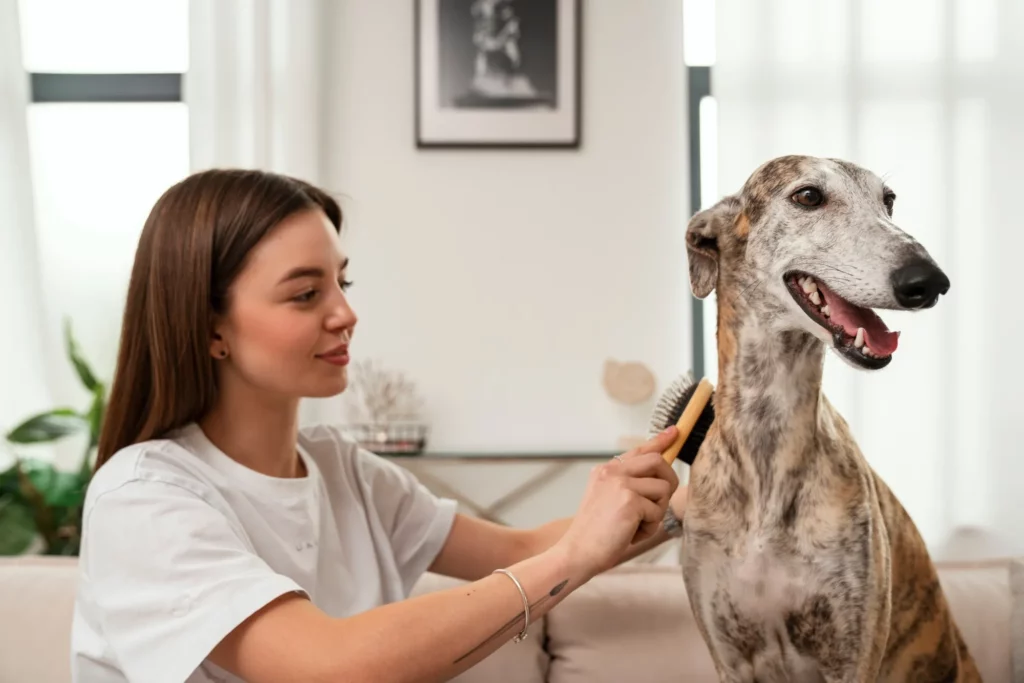
Remember to choose a grooming style that suits your dog’s needs and preferences and maintain a consistent grooming routine. By doing so, you can ensure that your furry friend always looks and feels their best. Lastly, always consult a professional if you’re unsure about any part of the grooming process to avoid any potential harm or injury to your pet.

